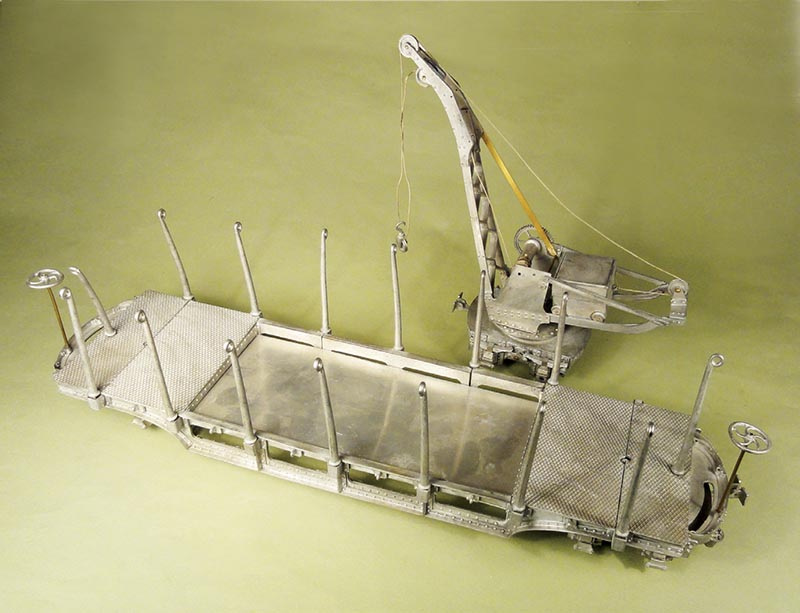 I was delighted to see Bachmann Industries bring out On30 models of 60 cm gauge, Class 10, 2-6-2T Baldwin trench engines, even if they are the wrong gauge. You can see my review here. I am delighted because these models will allow modelers to build layouts based on the trench railways of World War I. These narrow gauge railways were as definitive as any mining or logging line and deserve to be modeled. There are many books about the trench railway and several YouTube videos on the internet. Several new books were published in England during 2018, the 100th anniversary of the end of the war, and several layouts were featured in the model press. This issue contains one by French narrow gauge modeler, Bernard Junk, on page 38.
I was delighted to see Bachmann Industries bring out On30 models of 60 cm gauge, Class 10, 2-6-2T Baldwin trench engines, even if they are the wrong gauge. You can see my review here. I am delighted because these models will allow modelers to build layouts based on the trench railways of World War I. These narrow gauge railways were as definitive as any mining or logging line and deserve to be modeled. There are many books about the trench railway and several YouTube videos on the internet. Several new books were published in England during 2018, the 100th anniversary of the end of the war, and several layouts were featured in the model press. This issue contains one by French narrow gauge modeler, Bernard Junk, on page 38.

The GAZETTE has published articles on trench railway equipment over the years, and remember we (Benchmark) published, way back in 1990, Richard Dunn’s encyclopedic book Narrow Gauge to No Man’s Land. It tells the story of the four regiments of U.S. Army troops that ran the U.S military railways in Europe. The book is full of photos and plans for both steam and internal combustion locomotives, and cars, track, and railway facilities. It also has detailed rosters of equipment, and the distribution of surplus locomotives after the war. And it’s still available.

ABOVE: I also have a 1.20.3 scale, 45 mm gauge live steam model of a Baldwin 2-6-2T. It was made by Roundhouse Engineering and I have run it a few times. Always wanted to build a train for her to haul, but never got around to it.
Additional information and inspiration can be found in Bernard Kempinski’s book Model Railroads Go To War (Kalmbach Books). While Bernard models Civil War railroads in O gauge, he also has an O scale World War I trench railway layout.

ABOVE: Somewhere along the line I assembled these models. They are white metal, built to 16 mm scale, and run on 32 mm gauge track, The long car was used to transport shells, troops, and other supplies, and the four wheel crane hoisted shells into the car. For those of you not familiar with 16 mm scale 32 mm gauge, it is quite popular in England. In the 1950s a few British modelers began building models to run on 32 mm O gauge track. Since they wanted to build 2-foot gauge trains they divided 32 by 2, and came up with 16 mm scale. The early modelers used O gauge wheel set mechanisms until manufacturers began making parts. Today, there are even live steam models available in this scale and gauge.
While I have never modeled these military trench railways, I have collected a few models over the years and have shared a few photos here.
—Bob Brown, Editor


